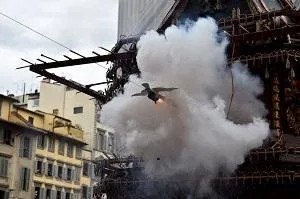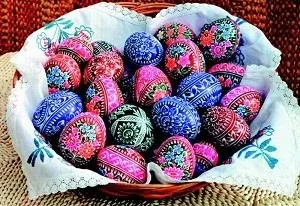
How Easter is Celebrated around the World – Culture and Tradition Across the World
To us, Christians, Easter is one of the most important celebrations of the church simply because it reminds us of the victory of Jesus Christ over death and the unconditional love of God the father that He gave His only Son, Jesus Christ, to be crucified on the cross for the sake of the salvation and forgiveness of our sins.
By definition, Easter is a Christian festival that celebrates the return of Jesus Christ to life following his death. It is a feast that commemorates Christ’s resurrection and is observed with variations of date due to different calendars on the first Sunday after the paschal full moon.
So, what I will be sharing with you are the various ways of celebrating Easter from cities to country around the world with traditions differing according to their cultures and religion.
I have gathered lists of Easter traditions from different places around the world.
Italy
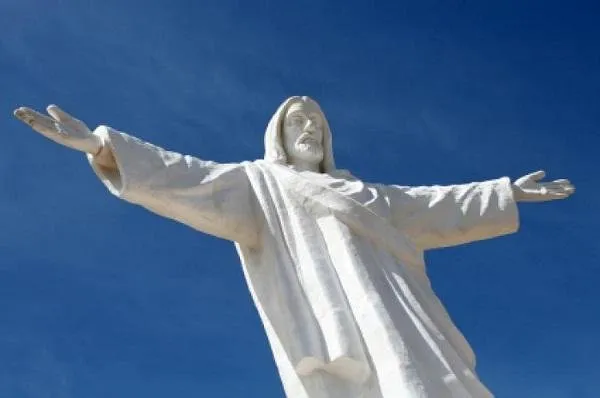
Easter in Italy is known as ‘Pasqua’, a joyous celebration where Italians participate in the festive spirit of Easter and are the second most important religious holiday after Christmas. Many towns and cities in Italy have various traditions and rituals in celebration to Easter Sunday and some of the famous cities include Florence, Rome, and Vatican City (the only city within a city).
Florence
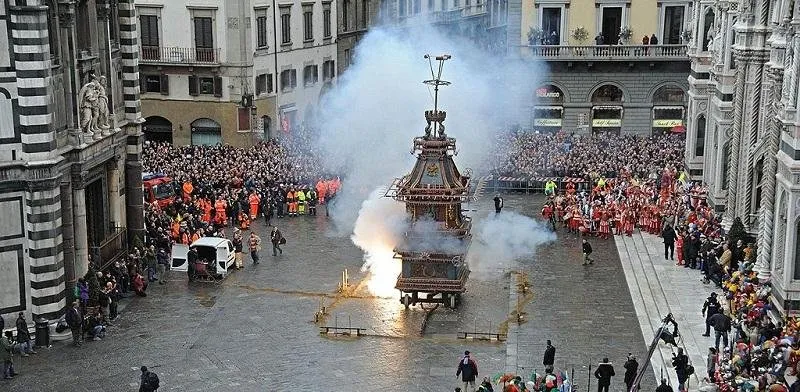
In Florence, they celebrate Easter with what they called ‘Scoppio del Carro’ meaning explosion of the cart. It is a huge, decorated wagon cart loaded with fireworks, that is dragged by a team of white oxen through the streets of Florence until it arrives at the 'Duomo' (the Italian word for cathedral), Basilica de Santa Maria del Fiore.
After mass, the Archbishop sends a mechanical dove called “la columbina” towards the cart, igniting the fireworks, showing a spectacular display of colorful sparks that will leave the crowd in awe.
Rome

Rome is a city that has a city in its state which is the Vatican City, home of the Pope. Rome is a mecca for all Catholic believers and pilgrims where thousands of Christians gather hoping to listen to the Pope’s mass at the Saint Peter’s Basilica and meet the Pope in the procession.
Easter in Rome is celebrated starting by a procession of a statue of Jesus and his mother Mary carried in the street followed by a very large crowd of people and celebrates the resurrection of Jesus Christ.
United Kingdom
The United Kingdom is a sovereign state comprising of three countries namely England, Scotland Wales, and Northern Ireland.
Diverse cultures and traditions are celebrated in the UK during Easter that doesn't only involve Christians because Easter already existed in UK way before Christianity was introduced back in 597 AD by the mission of Augustine. Also, Easter in the UK happens at the end of winter meaning it is celebrated on the Sunday of the first day of spring which can occur on any Sunday between the end of March and the month of April.
The most common way of celebrating Easter in the UK is through the exchange of Easter Eggs, Easter bread, hot cross buns, and other gifts like Easter bunnies with one another. Easter eggs are very old tradition, way back before the arrival of Christianity that’s why eating and exchanging of Easter egg is very popular in the country.Another famous tradition in celebrating Easter is through performing the Morris dance. It is a very old traditional type of folk dance that can be traced back to the Middle Ages. In this dance, men dress up in costumes, wearing hats, ribbon, and bells around their ankles while dancing in the streets.
Germany
Easter in Germany is referred as ‘Ostern’ and will last for about three weeks for the children. Germans greet each other by saying ‘Frohe Ostern’ meaning happy Easter and during ‘Ostersonntag’ (Easter Sunday), they celebrate it by hiding baskets filled with different colorful Easter eggs, chocolate bunnies, and other sweets or chocolates for their children.
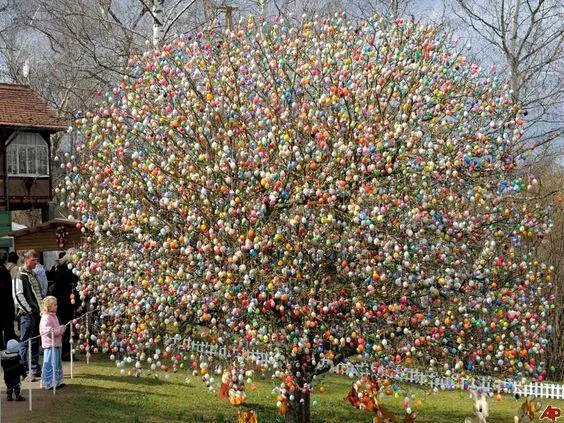
Germans also have what they call 'Osterstrauch' which means Easter trees where they hung hollowed eggs and colorful ribbons for decoration all throughout the week of Easter. Germans beautify and displays different colors of eggs hanging on the trees of the street.
Czech Republic
The Czech Republic celebrates Easter lasting for two days, Easter Sunday and Easter Monday, where Easter Monday is not associated with Christian celebrated but rather with folk tradition. The Easter celebration of Czech Republic comprises of three symbolic traditions; Whip, Easter Egg, and Easter Lamb.
Whip
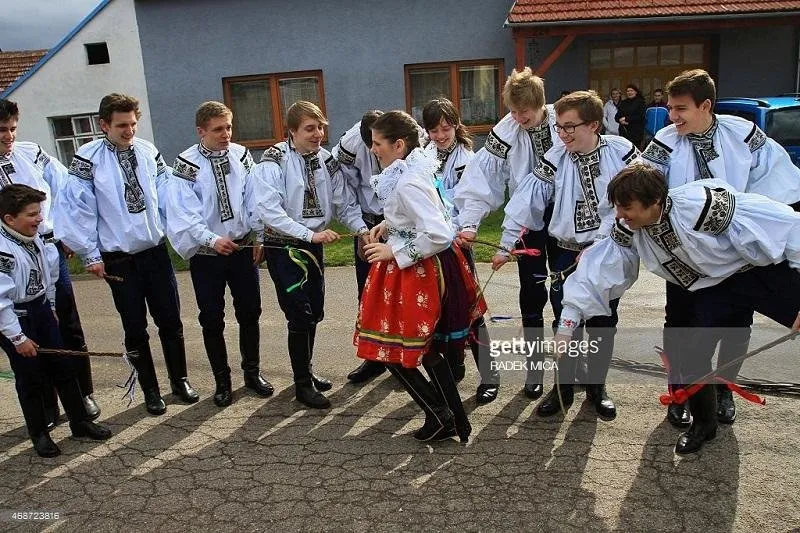
There is a tradition in the Czech Republic on the Easter Monday in which men will spank the women using Pomlázky, a handmade braided whips made of pussy-willow twigs with colorful ribbons for decoration. The spanking is meant only for fun and not to cause harm. According to legend, the whipping act symbolizes vitality and fertility to women that were to be transferred from the willow made whip.
Easter Egg
As a reward, the women will give the men decorated eggs called ‘Kraslice’ for whipping them on Easter Monday. Decorating eggs or ‘Kraslice’ is one of the most practiced Easter traditions in the Czech Republic.
Easter Lamb
Most people in the Czech Republic eat lamb on Easter Sunday whether it is made from sweet dough or meat with additional eggs or meat fillings.
Hungary
Easter in Hungary also has a lot of folk traditions and festivals especially to mark the springtime holiday. These include the traditional egg hunting where children will participate and receive Easter basket from the Easter bunny but the unique tradition you can find in this country is the tradition of “Sprinkling”.

“Sprinkling” is a popular Hungarian Easter tradition where men will sprinkle water, perfume, or cologne over a woman of all ages regardless if married or unmarried. This traditional symbolizes fertility, healing, and cleansing rites.
Philippines
“Semana Santa” (holy week) is a term used by Spain, Mexico, and the Philippines to celebrate Easter. This is due to the history of colonization of Spaniards way back in 1500’s. These three countries have very similar ways of celebrating Easter but in the Philippines, we have our own unique way of celebrating Easter.
For us Filipino Christians, Easter is one of the most important and significant festivals of the church in commemoration of the resurrection of Jesus Christ from the dead. It is celebrated with joyous festivity, with songs of praises and thanksgiving to God the Almighty Father.
Easter Sunday in the Philippines typically begins with a separate pre-dawn procession called “Salubong” (welcoming) of the statues of risen Jesus Christ and Mother Mary to meet one another in the church. The men will accompany the procession of the statue of Jesus Christ while the women will accompany the statue of Mother Mary.

After the meeting of the statues of Jesus Christ and Mother Mary, angelic voices of children dressed as angels will be heard singing songs of praises for the risen Lord Jesus Christ. The “Salubong” is a symbolic representation of the meeting between Jesus Christ and Mother Mary after His resurrection and during this reenactment, Mother Mary’s deep sorrow will be replaced with great joy and gladness upon seeing Jesus Christ is alive. A mass will then follow after the singing of the children.
After the Mass, the people will great one another saying “Maligayang Pasko ng Muling Pagkabuhay” which means Merry Christmas of Christ Resurrection.
References
- https://www.timeanddate.com/holidays/italy/easter-sunday
- https://www.tripsavvy.com/easter-in-italy-1547306
- https://www.visitflorence.com/florence-events/explosion-of-the-cart-easter.html
- http://www.walksinsideflorence.it/easter-in-florence-scoppio-del-carro.html
- https://www.learnenglish.de/culture/easter.html
- http://www.czech.cz/en/103478-celebrating-easter-in-the-czech-republic
- https://www.eatingpraguetours.com/blog/czech-easter/
- https://en.wikipedia.org/wiki/Easter


